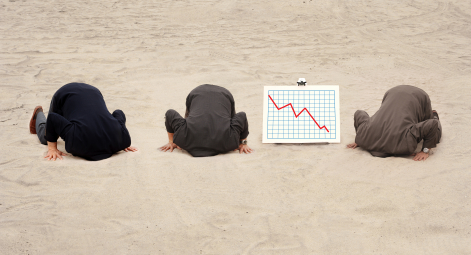I suspect the biggest costs both we (individually and within our organizations) and our customers incur is not the spending on new programs, solutions, methods, or change; but rather the costs of doing nothing. Yet we very seldom analyze and quantify these issues.
Sometimes, mistakenly we treat them as sunk, even though we keep paying and paying and paying.
Take an inventory — both what you do in your own work flow, what your organization does. Too often, inertia (the way we have always done things), busyness (we use activity as an excuse not to change now), laziness (we just don’t care), fear (we know we should change but lack the confidence to change), lack of commitment (again, we don’t care), blindness (we are not paying attention to what’s happening around us.), arrogance (thinking we are the best and don’t need to change).
These are all seemingly small, subtle things that rob us of the ability to perform at the highest levels possible or cause us to miss opportunities for improvement.
More blatant is seeing and not addressing things we know to be problems–the poor performer, absence of a current sales process, not investing in developing the capabilities of our people and managers, and the list goes on. These cause us to spend millions–mostly wasted, and to lose even more in lost opportunity.
Just like our own performance and our own organizations, our customers do the same thing, probably for the same reasons. They choose to do nothing–that is they keep doing what they are currently doing.
It’s easy for all of us to do nothing.
- It involves no personal risk.
- It doesn’t require us to learn any thing new.
- It doesn’t disrupt our current workflow or lives.
- It doesn’t require us to spend any more than we are currently spending.
- It doesn’t require us to develop new ideas, to think differently, to consider we might be wrong.
- It doesn’t require us to question what, why, or how we are doing things.
Doing nothing is a going out of business strategy. The reason is, someone else is always doing something. They are innovating, changing, disrupting.
They may be our customers. They may be our customers’ customers. They may be our competitors or our customers’ competitors. It may be changes driven by regulations, changing world economies, or just a different phase of the moon.
Doing nothing means we are missing opportunities to grow, to improve our operations, to better serve our customers, to gain more share, to find new markets, to be more effective and efficient.
Doing nothing means we eventually become irrelevant.
If we want to be leaders, individually and organizationally, we cannot do nothing. We must constantly discover, learn, change, and improve. We must innovate, ideally we are the drivers not the followers.
Doing something is not without its risks, we can make mistakes, we can do the wrong thing, we can fail. But we can always learn and recover from whatever mistakes or failures we have. We can improve and move forward.
The same holds true for our customers, we must help them learn about the costs of doing nothing. We must help them develop a vision for the future, one which we can help them achieve.
As sales people we focus our customers on doing something. They ask for the costs and we give them a price. Instead, we must focus on the costs–we must visibly demonstrate the costs of doing nothing are far more than the costs of change.
As we look at ourselves and our organizations, we must not fall into the trap our customers and others might fall into. We must realize there are costs to doing nothing.

Dave, the cost to our customers of doing nothing has been on my mind lately. The forces of the sales winds must have filled both of our sails. It’s easy for us to focus on the value of purchasing, the ROI, cost savings, revenue increases, productivity increases or a leg up on the competition. Everyone does it because it’s the way we’ve always developed value. Helping our customers discover the cost of doing nothing can be even more powerful. Those costs could open the door to other suppliers replacing them or as you said, “A going out of business strategy.” Asking, what happens if you do nothing and painting a realistic picture of the result can be more powerful than top and bottom line impact. It opens a line of thinking that leads to insights. This approach moves the salesperson up to adviser and differentiates them from the rest of the salesy salespeople. Of course, it’s easier to follow the sales process, checking off the things to do, sending out the canned emails, but then easier rarely leads to success.
Great observations Gary. It’s now so obvious, I know I’ve fallen into the trap. We focus so much on providing the justification for our solutions and for the change our customers will undertake, but we forget to focus on consequence of doing nothing. It’s so powerful–but we forget to use it. Thanks for the great comment!
On the other hand, Keith Murnighan has a book out called: “Do Nothing”.
http://keithmurnighan.wordpress.com/
Thanks Michael. Keith’s book is actually very intriguing and a perfect complement to the post. It focuses on getting the leader out of the way so the people can do something (with great coaching and guidance from the leader).
Keith is a pretty bright guy. He has a book published by Prentice Hall, now out of date, on negotiating exercises. It is now a free download, and chock full of neat ideas. Some of which may be useful for sales.